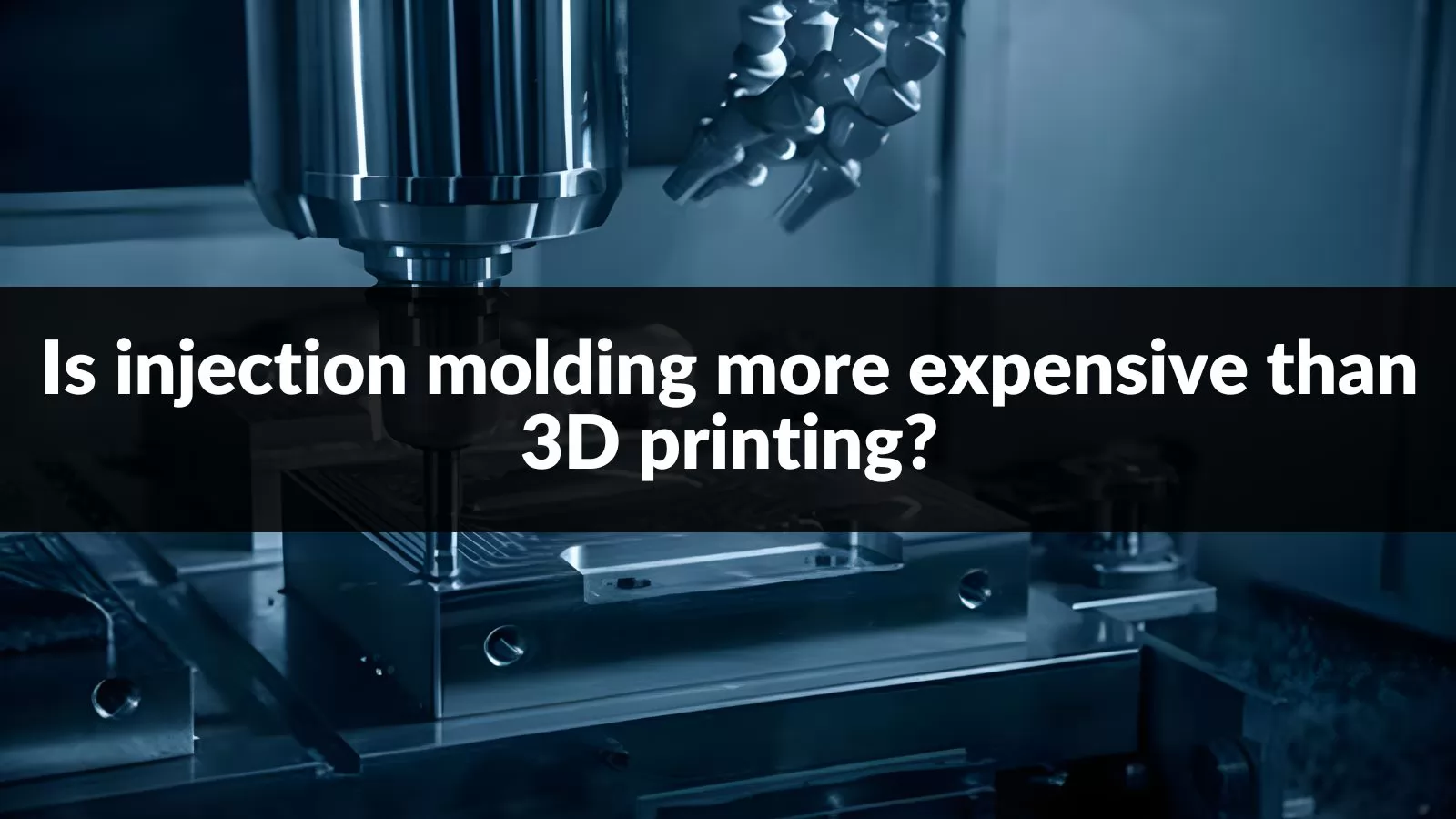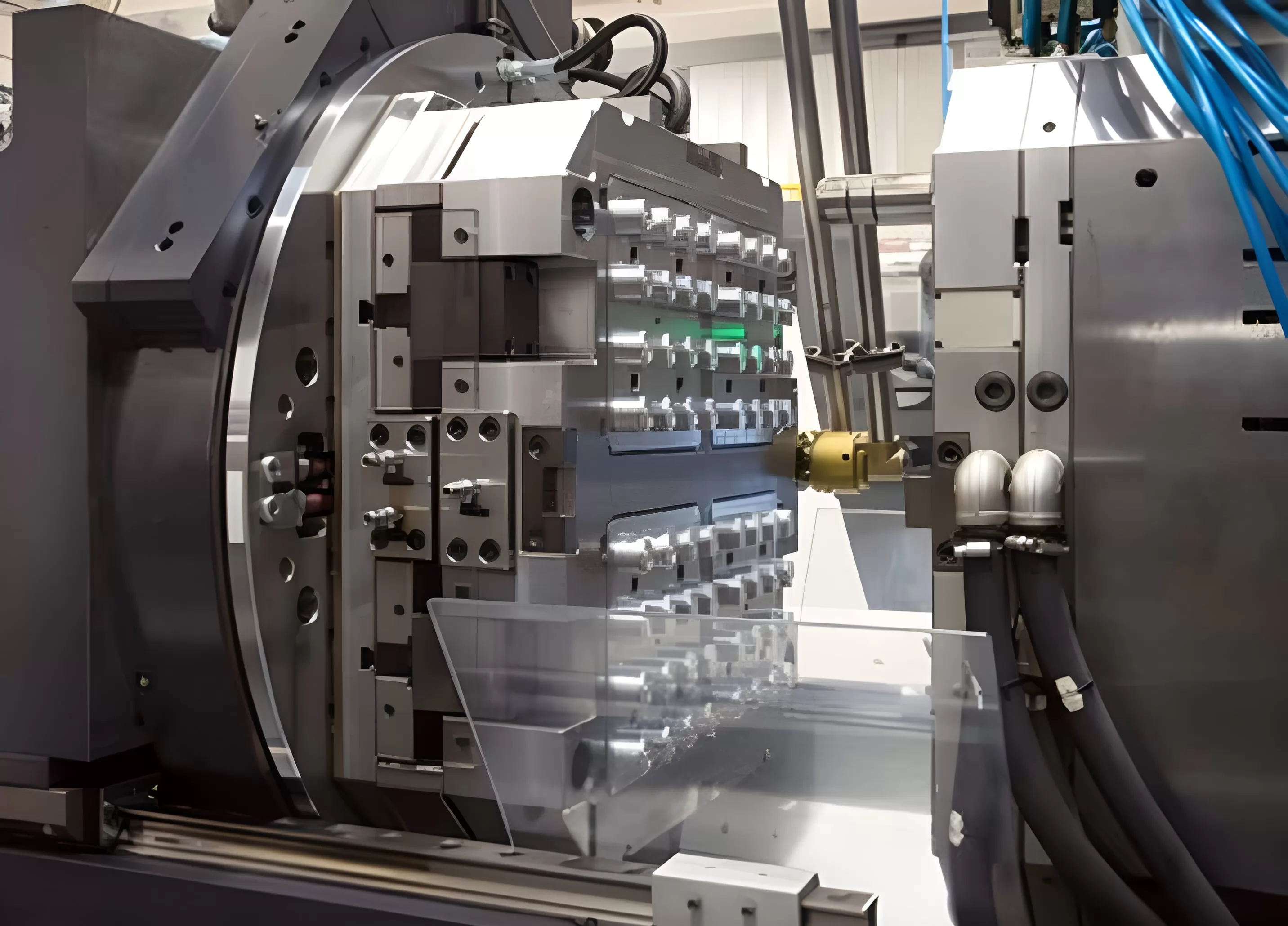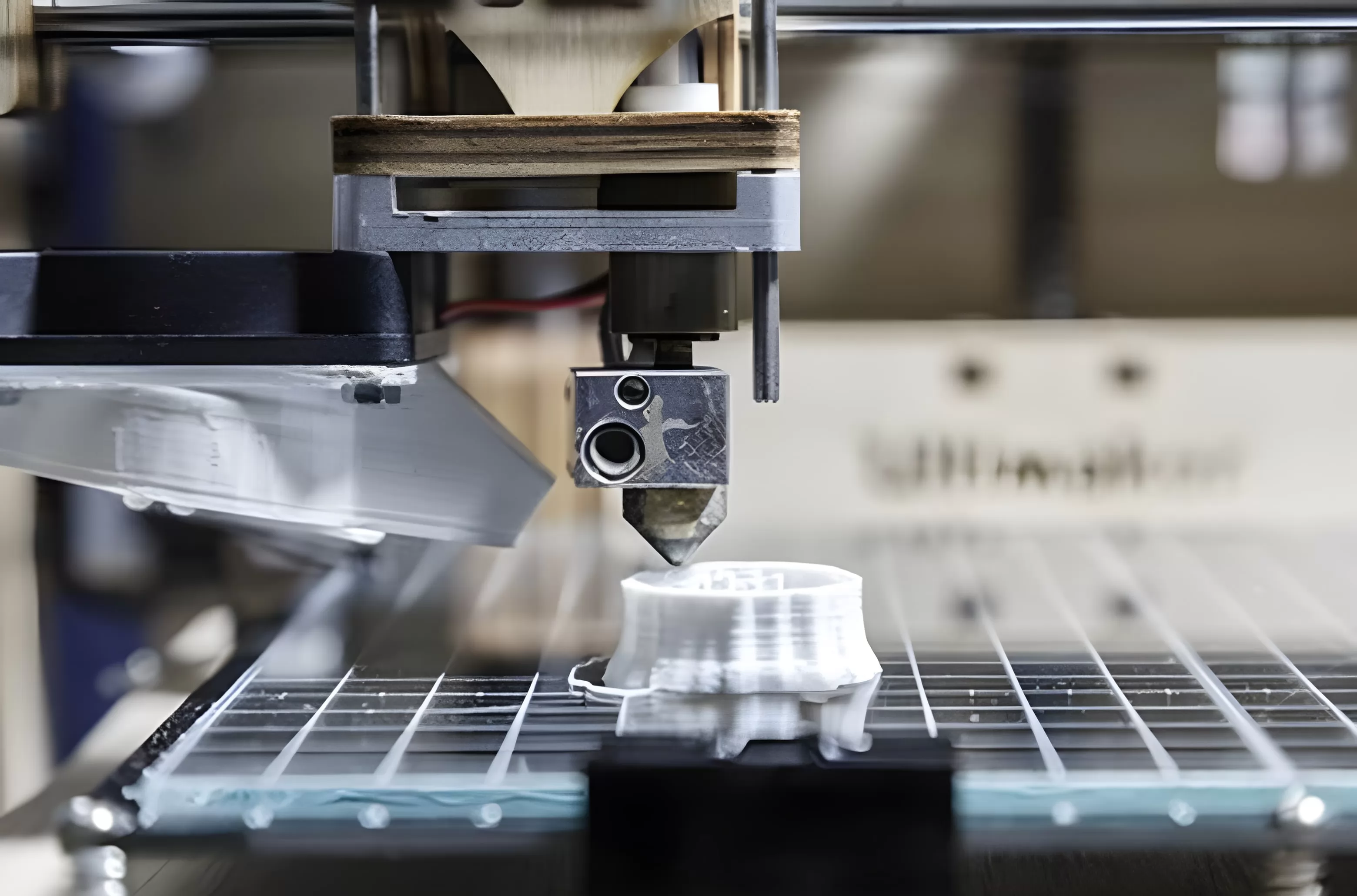
Injection molding and 3D printing are two of the most common manufacturing processes used across various industries for producing plastic parts. While both methods have their specific strengths, there is often debate regarding their cost-effectiveness and the scenarios in which one might be more economical than the other.
Understanding the intricacies of injection molding costs compared to those associated with 3D printing can provide businesses with crucial insights for strategic decision-making. Explore this article to learn how production volume, design complexity, and material requirements can influence the balance between these two pivotal technologies.
Is Injection Molding More Expensive Than 3D Printing?
When assessing whether injection molding is more costly than 3D printing, it’s imperative to consider the varying economies of scale and the specific requirements of the production run. Injection molding involves creating a mold, which is an upfront investment that can be quite substantial. This cost is spread out over the number of parts produced; hence, for mass production, the cost per unit decreases significantly, making injection molding a highly efficient and economically feasible option.
Contrastingly, 3D printing boasts a lower initial investment since it requires no specialized tooling or molds. However, while 3D printing is ideal for prototyping and low-volume manufacturing due to its flexibility in design changes and smaller setup costs, on a per-unit basis, the cost may not decrease as significantly as with injection molding at higher volumes.
To further underscore this comparison, consider that injection molding machinery incurs significant operational costs including energy consumption and labor for running the machines. These costs are fixed regardless of whether one or thousands of pieces are produced. On the other hand, operational costs for 3D printers generally remain consistent per item as each piece is printed individually without significant economies of scale.
In summary, determining if injection molding is more expensive than 3D printing hinges upon factors such as production volume, initial setup costs, and ongoing operational expenses. For large-scale manufacturing with standardized designs where initial mold costs can be amortized over many units’ reduction in per-part price renders injection molding more cost-effective. Conversely, for bespoke items or limited runs where agility and customization take precedence over volume economics, 3D printing could be more economical.
| Cost Factor | Injection Molding | 3D Printing |
|---|---|---|
| Initial Investment | High (mold design & creation) | Low (no tooling required) |
| Production Volume | Economically viable at high volumes | Cost-effective for low volumes |
| Per-Unit Cost Scaling | Decreases with higher volumes | Remains relatively constant |
| Operational Costs | High (energy consumption & labor for machine operation) | Variable (depends on material & machine used) |
| Flexibility in Design Changes | Low after mold creation | High throughout production |
| Setup Costs | Significant | Minimal |
| Economy of Scale | Significant at high volumes | Less significant |
How much does injection molding cost?
At a fundamental level, creating an injection mold can demand significant upfront expenses primarily due to the complexity of the mold design process and the precision required in manufacturing these molds. Costs for a basic mold can begin at several thousand dollars, but depending on the complexity of the item to be produced, they can easily escalate to tens or hundreds of thousands.
Material costs are dependent on the type of plastic or polymer selected for the product as well as market price fluctuations. The choice often hinges upon factors such as durability, flexibility, and resistance to temperature or chemicals.
Labor costs must also be accounted for in injection molding operations. This includes setup time for machines and workforce requirements for operating them efficiently during production runs.
The production volume plays a considerable role; larger quantities usually benefit from economies of scale which lowers the per-unit cost substantially after absorbing initial setup charges.
Maintenance is another economic consideration in ongoing expenses. Injection molds have exceptional longevity but still require maintenance over time to ensure consistent quality output.
Lastly, energy consumption can also carry measurable costs with injection molding machines consuming significant electricity during operation especially if running on a continuous cycle for high volume batches.
| Cost Component | Description | Approximate Cost Range |
|---|---|---|
| Mold Design & Manufacturing | Complexity and precision manufacturing demands higher costs here | Thousands to hundreds of thousands |
| Materials | Varies based on type & quantity; factoring resistance & durability necessities | Market-dependent |
| Labor | Includes setup time and actual operation staffing | Variable (depends on local rates) |
| Production Volume | Larger volumes lower per-unit cost; high initial setup costs | Economies of scale applicable |
| Maintenance | Essential for prolonged optimal functionality | Regular investments needed |
| Energy Consumption | High electricity usage throughout operations | Depends on electricity rates & use |

How much does 3D printing cost?
The initial setup costs for a 3D printer can range from just a few hundred dollars for a basic desktop model to tens of thousands for industrial-grade machines. Consumable expenses such as filament or resin also contribute to the overall cost.
Typically, the printer’s operating costs include electricity and regular maintenance. In terms of material costs, standard plastics like ABS or PLA are usually on the lower end of the price spectrum, while specialized or high-performance materials like PEEK or metal powders can significantly increase expenses.
For individual prototypes or small runs, 3D printing might be cost-effective due to its minimal setup requirements compared to injection molding. However, economies of scale become a factor when considering larger production volumes: individual unit costs with 3D printing typically remain constant regardless of quantity, whereas injection molding offers reduced per-unit costs as quantities increase.
Another consideration is post-processing; some 3D printed parts may require additional finishing, cleaning, or curing processes that add time and expense. On demand production also allows for flexibility but can be more costly if it leads to frequent changes and incremental improvements with subsequent print runs.
| Cost Factor | Consideration in 3D Printing |
|---|---|
| Equipment Costs | Range from affordable desktop models to expensive industrial machines. |
| Material Costs | Varied – basic plastics are economical; advanced materials command premium prices. |
| Complexity & Volume | Well-suited for complex designs; less cost-efficient at higher volumes compared to other manufacturing methods. |
| Operation & Maintenance | Includes electricity and machine upkeep expenses. |
| Post-Processing Requirements | Additional steps may raise total manufacturing costs. |
| Flexibility | On demand customization comes with potential increased costs due to changes in design. |

Quality and Material Considerations
In the realm of manufacturing, quality and material options are crucial elements that directly influence a product’s performance and lifespan. Injection molding offers a broad array of material choices, including high-strength composites and thermally resistant plastics, which can be selected to match specific application requirements. These materials have been industry-standard for decades, allowing for proven reliability in various uses from automotive components to medical devices.
On the other hand, 3D printing technology has expanded its portfolio of materials in recent years to include not only standard plastics but also metal, resin, and even ceramic options. This growth introduces greater flexibility in design but also presents considerations regarding the mechanical strength and finish quality achievable compared to injection-molded parts.
The choice of material significantly impacts cost. In injection molding, producing molds from higher-grade steel for more robust parts can drive up initial expenses; however, this may be offset by the lower per-unit cost when manufacturing at high volumes. Conversely, 3D printing with specialized materials might incur higher raw material costs or require costly post-processing to achieve the desired surface finish or durability.
Product performance is equally subject to material properties. High-precision applications might favor injection molding for its ability to consistently produce parts within tight tolerances. 3D printed parts may need additional refinement to reach similar precision levels. Heat resistance, tensile strength, and impact resistance are some performance attributes that may dictate whether a particular manufacturing process paired with specific materials suffices for a product’s intended use case.
| Consideration | Injection Molding | 3D Printing |
|---|---|---|
| Material Variety | Extensive (plastics, composites) | Expanding (plastics, metals, resins) |
| Durability | High (depends on mold material & process) | Varies (material-dependent & potentially needing reinforcement) |
| Surface Finish | Smooth (high-quality molds) | Layered texture (often requires post-processing) |
| Precision | High (tight tolerances achievable) | Improving (with precision technologies like SLA/DLP) |
| Volume Efficiency | Cost-effective at large scale | More expensive at scale; suited for low volume or custom items |
| Initial Costs | Higher due to mold fabrication | Lower (no tooling required) |
| Material Costs | Lower per unit at high volume | Higher per unit; specialty materials increase costs |
| Performance | Customizable based on application needs | Depends on technology & material advancements |
Quality and Material Options in 3D Printing and Injection Molding
In the realm of manufacturing, both 3D printing and injection molding provide a spectrum of quality levels and material choices to suit diverse product requirements.
Here’s a summarized table comparing various quality and material options for both processes:
| Material Type | 3D Printing Options | Injection Molding Options | Characteristics |
|---|---|---|---|
| Plastics | PLA, ABS, PETG | PE, PP, PS | Cost-effective for prototyping/small batches; Range of durability/options |
| Nylons | Various nylons | Nylon variants | Durable; Flexibility; Good abrasion resistance |
| Resins | Epoxy resins | Polyester resins | Smooth finishes possible; Varying toughness |
| Metals | Steel, Titanium | Aluminum, Magnesium alloys | High strength; Suitable for functional parts |
| Specialty Materials | Conductive filaments | Thermosetting plastics | For electronic components; Heat resistant applications |
Balancing Cost-Efficiency with Product Quality
When discussing manufacturing processes like injection molding and 3D printing, a critical balance must be struck between cost-efficiency and product quality. Achieving this equilibrium involves meticulous analysis and decision-making wherein manufacturers consider both the initial expenses and the sustaining costs against product standards. High-quality materials typically incur higher costs, but they can significantly improve product longevity and performance. Conversely, opting for lower-cost materials may save on immediate expenses but could lead to compromised product integrity or shortened lifecycle.
Additionally, product complexity has a direct relationship with quality and cost. Injection molding might demand considerable upfront investment for molds but can produce complex parts at high volumes more efficiently than 3D printing once set up—a plus for long-term cost-effectiveness and quality control at scale. In contrast, 3D printing allows for intricate designs without the need for expensive tooling which can be favorable for low-volume production runs.
Moreover, incorporating sophisticated design features through injection molding often requires advanced mold designs which spike the overall costs. With 3D printing, such complexities are less of a financial burden as they do not typically necessitate additional equipment or tools.
| Factor | Injection Molding | 3D Printing |
|---|---|---|
| Initial Investment | High (due to mold costs) | Low (no tooling required) |
| Volume Efficiency | High (optimal for large quantities) | Low to Medium (better suited for small runs) |
| Material Costs | Variable (high-quality materials cost more) | Variable (depending on technology & resins used) |
| Design Complexity Costs | High (advanced molds increase price) | Low (complexity doesn’t substantially raise costs) |
| Lifecycle & Performance | Potentially higher due to rugged materials | Dependent on print technology & material selection |
This table showcases how each manufacturing method weighs against different aspects of balancing costs and ensuring optimal product quality.
In Conclusion
Injection molding tends to be more cost-effective for mass production while 3D printing is usually more affordable for small runs and prototypes.
To learn more about how injection molding and 3D printing can benefit your production needs, contact us today. Our experts are ready to help you determine the most efficient and cost-effective solution for your project.


